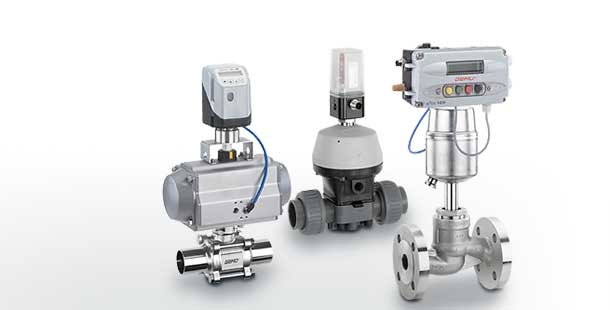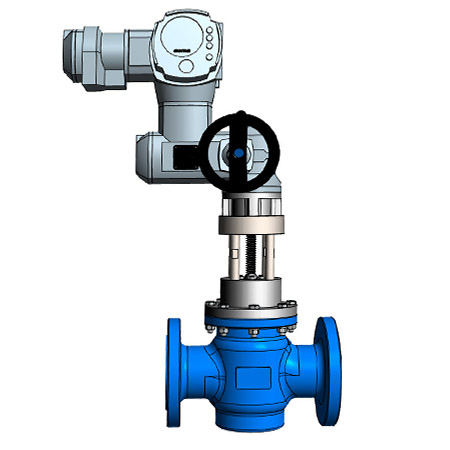The Function of Control Valves in Fluid Flow Management Systems
The Function of Control Valves in Fluid Flow Management Systems
Blog Article

Maximize Power Cost Savings and Convenience With Advanced Structure Automation Controls
In the world of contemporary design and facility administration, the integration of sophisticated building automation manages stands as a crucial improvement. By utilizing the power of automation, structures can adjust, react, and progress in means that were once unimaginable.
Energy Efficiency Advantages
Energy effectiveness advantages can considerably decrease power intake and functional prices in structures. By implementing energy-efficient practices and technologies, building owners and operators can achieve significant cost savings while additionally adding to ecological sustainability. Among the main benefits of boosting power performance in structures is the decrease of utility bills. Energy-efficient systems, such as sophisticated structure automation controls, can maximize using resources like home heating, lighting, and cooling, resulting in lower power costs in time.
In addition, improved energy performance can lengthen the life-span of structure devices and systems. By operating more effectively, cooling and heating systems, lighting fixture, and various other structure elements experience less wear and tear, causing minimized maintenance and substitute expenses. Furthermore, energy-efficient buildings frequently command greater residential property worths and rental prices, offering long-term financial benefits to proprietors.
Furthermore, power performance can boost resident convenience and productivity. Properly managed indoor settings with optimal lighting and thermal conditions create a more helpful and pleasant office, resulting in enhanced employee contentment and efficiency. Overall, the power performance advantages related to innovative building automation controls are multifaceted, including cost savings, environmental stewardship, and passenger health.
Boosted Convenience Control
Enhancing convenience control in building settings requires an innovative assimilation of sophisticated automation systems for optimum resident wellness. By using sophisticated structure automation controls, centers can customize the interior atmosphere to satisfy the certain demands and choices of passengers. These systems make it possible for specific law of ventilation, temperature, and lights, creating a effective and comfy atmosphere. Passenger fulfillment and productivity are closely linked to thermal convenience, making it necessary to have systems in location that can adapt to transforming problems in real-time.
Enhanced comfort control surpasses fundamental temperature level modifications. It includes functions such as individualized settings, tenancy sensing units, and natural light usage to develop a dynamic and receptive environment. By incorporating these innovative controls, buildings can not only enhance convenience yet additionally improve power efficiency by enhancing system procedures based on real tenancy and usage patterns. Inevitably, focusing on passenger comfort with sophisticated automation systems results in a much more delightful and healthier interior environment.
Functional Performance Improvements

In addition, the execution of real-time monitoring and analytics devices allows structure operators this website to determine energy inefficiencies and functional anomalies immediately. By continually keeping an eye on power use patterns and system performance metrics, adjustments can be made in real-time to maximize energy intake and guarantee peak operational performance. control valves. In addition, incorporating demand action strategies into building automation controls can even more improve operational efficiency by dynamically changing power use based on grid problems and prices signals
Indoor Climate Optimization
Reliable indoor environment optimization is an essential element of building automation controls, ensuring residents' convenience and wellness while making the most of power savings. By using advanced sensors and controls, building automation systems can continuously keep an eye on and change temperature level, moisture degrees, air quality, and air flow to develop an ideal indoor environment. Keeping comfy and regular problems not only boosts passenger satisfaction however additionally enhances efficiency and general wellness.
Indoor environment optimization additionally plays a crucial function in power effectiveness. By fine-tuning cooling, air flow, and home heating systems based upon real-time information and tenancy patterns, developing automation controls can considerably minimize power intake - control valves. As an example, carrying out strategies such as demand-controlled ventilation and thermal zoning can assist minimize energy waste while making certain that each area of the structure obtains the needed conditioning.

Sustainable Environment Creation
Building automation manages not only optimize interior climate conditions for energy effectiveness and passenger convenience however likewise lay the foundation for producing a sustainable atmosphere with critical administration of resources and systems. By integrating innovative structure automation innovations, such as sensors, actuators, and intelligent software program, facilities can monitor and change power usage in real-time to lessen waste and lower their carbon footprint. These systems enable anticipating upkeep, determining potential problems before they rise and enhancing equipment performance to improve long life and efficiency.
In addition, sustainable setting production expands past energy administration to include water conservation, waste decrease, and interior air high quality improvement. Building automation controls can control water use, spot leaks, and make sure correct waste disposal techniques, contributing to total sustainability initiatives. Additionally, by regulating and keeping track of ventilation and filtering systems, these technologies boost passenger wellness and efficiency while lowering energy usage connected with a/c operations.
Verdict
Finally, progressed building automation manages offer substantial benefits in terms of power cost savings, comfort control, functional performance, indoor climate optimization, and developing a lasting setting. By executing these controls, structures can accomplish optimal efficiency while minimizing energy usage and improving resident comfort. It appears that making use of innovative automation modern technology is critical in enhancing structure performance and producing an extra sustainable future.
Energy performance benefits can dramatically minimize power intake and operational expenses in structures. Overall, the power efficiency benefits linked with sophisticated structure automation controls are complex, incorporating cost financial savings, ecological stewardship, and occupant wellness.
Additionally, integrating need response methods right into building automation controls can even more enhance functional performance by see it here dynamically readjusting power usage based on grid conditions and pricing signals.
Structure automation regulates not only enhance interior environment conditions for power efficiency and resident comfort however likewise lay the foundation for creating a sustainable setting with calculated monitoring of systems and sources.In final thought, advanced building automation manages deal substantial advantages in terms of power cost savings, comfort control, operational performance, indoor climate optimization, and creating a sustainable setting.
Report this page